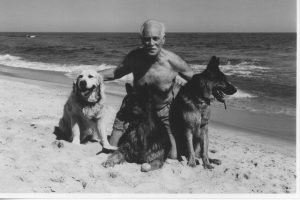
After my girlfriend, Tracy, had her first bout of chemotherapy and after she got her appetite back, we indulged in a really decadent lunch. That’s when we decided we would eat our way through her ovarian cancer, splurging during her chemo holidays and when she was feeling good enough to enjoy a meal. (BTW, chemo holiday is the term her doctors’ used for the almost-normal days post-bouts of being drugged up and suffering the aftershock and pre-your next round.)
When we went for lunch, we talked kids, careers, books, and movies. We didn’t avoid the cancer talk. But we didn’t dwell either.
The other day on the way to the dry-cleaners, I ran into Tracy and she asked me to join her that afternoon for her head shave and wig fitting. How could I refuse?
And yet, I worried I’d sob the whole time and not be the support system she needed. Watching a friend have her hair removed is watching her parade into cancerland. Up until now, she may have been marching through hell but I was loitering in deep denial. We met outside her apartment at noon.
All morning, I had tried to image what a hair stylist majoring in chemotherapy cuts and cancer wigs would be like—particularly one on the tony upper east side of Manhattan. Tracy’s aunt was paying for her to get a top-of-the-line wig.
I imagined it would be spacious and white and pink. White for sanitary/medical. Pink for girls. Then I visualized the hairdressers. I pictured either (a) overly perky and saccharine-sweet chattering away in cheerleader diction to distract from the whole cancer theme (yuck!) or (b) overly soothing and sympathetic with airy yoga-teacher voices to make peace with all the bad stuff going on (equally yuck).
What we got was anything but cheerleader or yoga. And there wasn’t anything close to a slick paint job. We entered a drab apartment on the first floor of skinny walk-up. I’m talking no décor whatsoever. Pine-wood cabinets and tables with lots of wigs each one fitted on a head-shaped form. There were wigs on the table and wigs on the book shelves and rows of wig shampoo in the cabinet above the kitchen sink.
We were greeted immediately by the hairdresser. Again, nothing like I expected. Think Catskill comedian meets Italian Jersey shore. He said “Fahgettaboutit” and “you-know-what-I’m-saying” more often than someone doing a bad impression of how often New Yorkers say “Fagettabout” and “you-know-what-I’m-saying.” He bellowed when he spoke and put his face really close to yours.
In the old days, he said, when he was doing wigs “for like regular, crazy people,” the hairdressers really looked down on the wigmakers. “I mean it’s like putting a gay in the same room as Rick Santorum. Fahgettaboutit. You know what I’m saying?”
“Rita,” he hollered, “you can buzz her.”
His utter lack of sympathetic clichés made him all the more caring. He was loud and blunt and matter-of-fact and somehow that made the whole process a lot easier to digest.
Tracy winced when he started to cut her already short hair and she didn’t expect so much scalp pain. It hurt putting her head on a pillow, something her doctors never told her. That’s typical the first few days after chemo, her stylist said. (He knows. After all, he’s dealt with cancer patients for decades.)
But not to worry, he added. “Yeah, I think once your body gets used to, the uh, you know the tingling sensation, it’s like putting up with a tooth ache. After a couple days, you don’t even remember what it feels like not to have it.”
Well, that’s reassuring.
“When do you go for the next chemo?,” he asked.
“Tuesday,” said Tracy.
“So you’ll feel really sick on Friday. It’s mathematical.”
And, indeed, he spoke as if Tracy’s future was as predictable and straightforward as addition and subtraction.
I asked why he had a mirror in front of the chair. Did clients really want to watch as he buzzes? He said he swings the chair backwards for a lot of women but Tracy, he could tell was “well adjusted. You know what I’m saying?”
He doesn’t even have a barber chair, just a regular wooden desk chair with a swivel that makes him lean over so much it must hurt his back. Did he ever think of getting a chair that most hairdressers have that go up and down?
“Too Luciano,” he said.
The appointment lasted probably twice as long as we needed to be there, because there were so many stories. We heard about his visits to clients in their fancy Park Avenue apartments. Another woman, he said has trouble adjusting her wig. “And she went to Harvard. You know what I’m saying?”
“You know why she can’t adjust her wig,” he asked us (or really asked himself to lead into the next story) “Because she can’t cook. They order in all the time. If you can’t cook, you can’t fiddle with a wig. I don’t know an Italian man who would stand for that. My kids expect my wife to cook a three or four course meal every night. You know what I’m saying? Faghettagboutit.”
Tracy added that she’s worried about getting the wig on right and she’s a Harvard grad, too. But he wasn’t listening to us. He was busy with his own stories.
Then he pulled out her wig—a gorgeous, long, reddish piece with wispy front layers. He put it on but said he would need an hour, at least, to cut it down and fix the front. He suggested we go for lunch.
Before we left, I took a snapshot of Tracy with her pre-styled luscious red hairdo emailed the pictures to her boyfriend and relatives. She looked fabulous. Thanks to her hairdresser, I didn’t cry at all and then, as will be our usual, we went for another fancy lunch.
P.S: Later that afternoon, when I got home, I did two things:
- I did some online research to see if we know precisely what happens to hair shafts to make your hair fall out in clumps and if anyone is doing anything to prevent it. We’ve known for years that cancer drugs target cells that multiply fast—like your cancer cells and your hair cells, making your hair ridiculously breakable. But we still don’t know precisely—at the molecular level that is—what happens inside the hair. One scientist noted that his team is studying the impact to devise drugs to block hair loss. The problem, wrote Dr. Vladimir Botchkarev, in a 2003 article in The Society for Investigative Dermatology, is that “due to ethical problems in obtaining scalp biopsies from patients treated with chemotherapy, little is known about mechanisms.”
Let’s face it, after cancer surgery, cancer drugs, the devastating side effects, the hours and hours waiting around for treatment—not to mention the emotional upheaval of becoming a cancer patient—many women probably aren’t volunteering for a trial that requires scalping. A few drugs, he noted, seemed to prevent hair loss in newborn rats, but the same drugs were useless in older mice or human scalps.
- I got inspired to grow my hair long to donate to places that supply wigs for children with cancer. There are several organizations, many of them outlines in this New York Times piece. http://www.nytimes.com/2007/09/06/fashion/06locks.html?emc=eta1
